Ask the Trainer
Posted by Steve Boring on March 27, 2018
Toward the end of last year we introduced an "Ask the Trainer" box at the Fitness Desk where members can submit questions and then have them answered by some of our RAC Personal Training staff. Today we will focus on four of the questions that we have received:
1. What are the best exercises to tone upper arms?
When working on your arms you always want to start with multi-joint exercises, which are exercises that will work more than one muscle group when being performed allowing you to lift heavier weight. Examples of these would be the bench/chest press, shoulder press, pull-ups/lat pulldowns, and rows.
After three or four different multi-joint exercises I would then mix in a couple isolation exercises that target one specific muscle. A few single joint exercises that I like are laying triceps extensions, triceps pushdowns, preacher curls, and hammer curls.
I recommend grouping the exercises that require you to push on the same day together and the exercises where you are pulling on another day. This will allow you to train each muscle group with more volume and intensity. Lastly, always remember to vary your exercises, reps and weight every month or so, to keep pushing your body and receive the best results!
Josh Lewis, M. Ed, CSCS. Contact Josh at jlewis@racmn.com
2. Are the no bake energy bars too loaded with sugar?
The no bake energy bars have 15 grams of sugar per bar which comes from agave and bittersweet chocolate chips. They also have many other great ingredients including oats, wheat germ, Grape-nuts, dried fruit, protein powder, nuts and nut butter. The total carbohydrate in the no bake bar is 25 grams and the protein content is 7 grams. The ratio of carbohydrates to protein is almost 4:1, which makes this bar a great option for a post workout snack. Post workout is the most ideal time to have a food that may be a little higher in sugar or glycemic index because the muscles are very receptive to restoring glycogen stores for 30-60 minutes post workout.
For those of you that still want to reduce the sugar content in no bake bars, my secret is to replace half of the agave with chia gel. To make ½ cup chia gel, add 4 tablespoons of chia seeds to 1/3 cup of water and let sit for 5 minutes to form a gel. This is a great way to reduce sugar, increase omega 3’s and still ensure these bars are sticky enough to hold all the dry ingredients together.
Branda Anderson, RD, CSSD, LD, ACE-CPT. Contact Branda at banderson@racmn.com
3. When I work out, can my heart rate be too high therefore making my workout less effective?
The American Heart Association recommends exercising at an intensity of 50-85% of your maximum heart rate (max HR). A heart rate above this range, especially if it exceeds your max HR, may not support your fitness goals. Going above the 85% max HR isn’t necessarily bad, but it can cause premature exhaustion making your workouts less effective, especially if your goal is to lose weight. Likewise, if your goal is an upcoming race or competition and you work out at a high intensity too close to the day of competition, that workout could jeopardize your performance in the competition.
It's important to note that maximum heart rate is just a guide. You may have a higher or lower maximum heart rate, sometimes by as much as 15 to 20 beats per minute. Also, keep in mind that consistent training at very high intensities can result in over training, which can lead to persistent soreness, illness, injury, insomnia, depression, etc.
The bottom line is that if you're worried that you're pushing yourself too hard or your heart rate is too high, back off a bit. Strenuous exercise such as weight lifting can cause a temporary increase in your heart rate that exceeds the max HR. There are also medical conditions which can cause your heart to beat abnormally high when exercising. Contact your doctor immediately if pain, light-headedness or confusion accompanies a racing heartbeat. An abnormal response to exercise may be the risk of heart attack, so contact your doctor if you find your heart rate is regularly above normal.
Mary Chestolowski, ACSM-CPT, Contact Mary at mchestolowski@racmn.com
4. How many calories should I burn during a cardio routine? Minimum calories to lose 4 lbs per month?
To promote weight loss, you need to burn more calories in a day than you consume. Take a person who eats 2200 calories a day, and has a basal metabolic rate (BMR) of 1500. (BMR is the number of calories required for basic functions of the body such as blood circulation and breathing). Between their activities of daily living and exercise this person would need to burn over 700 calories to be on track to start losing weight.
One pound is equivalent to 3500 calories. With no change to your diet and activities of daily living you would need to burn 14000 additional calories within that month to lose the 4 pounds. This breaks down to 500 calories worth of additional exercise each day.
To answer your first question, there is no set number on how many calories you should burn in one cardio session. It is all dependent on the number or calories you eat in a day, your activities of daily living, your amount of exercise, and your BMR. If you don’t know your BMR you can use a BMR calculator online or you can schedule an InBody appointment with any of the RAC Personal Trainers.
Lindzey Groth, NSCA-CSCS. Contact Lindzey at lgroth@racmn.com

Steve Boring
Fitness Director Steve Boring, PhD is a retired competitive Strongman and Powerlifter. He has won multiple Bench Press Championships from State to World level. Steve’s passions are centered on fitness and his love of helping people reach their goals. His door is always open to talk about fitness, health, and lifelong strength!
Contact Steve Boring at (507) 287-9312.



